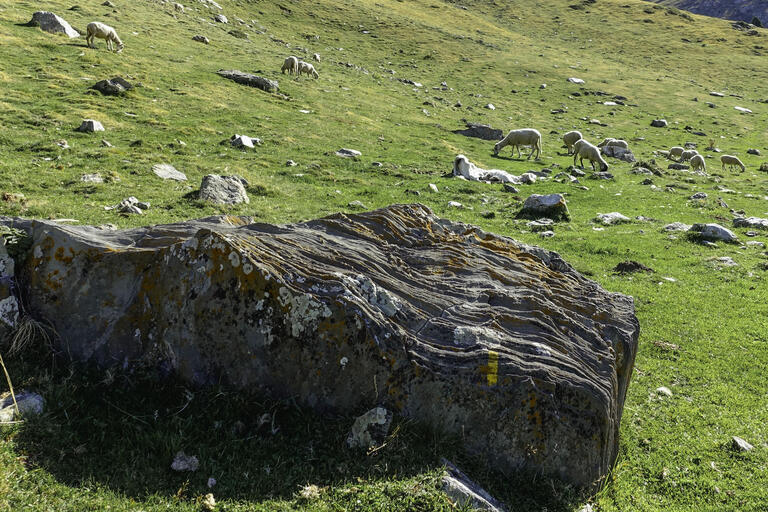
Introduction
The Pyrenees is a mountain range formed over 80 million years ago due to the collision of the Iberian and Eurasian tectonic plates, which caused the uplifting and stacking of rocks between the two plates. The materials that make up the rocky substrate of Núria are among the oldest in the Pyrenees, with radiometric records exceeding 540 million years of age.
The rocks we see here, on the side of the hostel, are modern sedimentary rocks: sandstones and shales. They are found at the higher parts of the peaks and roll down the slopes (like these ones here).
Along the way, however, we encounter different rocks. They are metamorphic rocks, meaning they are the earlier sedimentary rocks that, due to variations in pressure and temperature, have undergone changes in their original structure and mineral composition, transforming into something different: we're talking about slates and schists, which we identify by their darker brown color and their sheen.
Similarly, at higher elevations, we find white or very light-colored rocks. These are limestones that, under pressure, transform into quartz and appear at lower elevations.
If you want to see an example of the latter, when crossing the Fontnegra stream, go a little further and turn around to look at the high peaks on the right side of the hostel. Pay attention, and you'll surely identify the streak of White Rocks of Fontnegra, to the right of the Pic de l'Àliga.